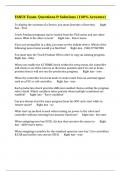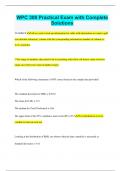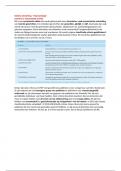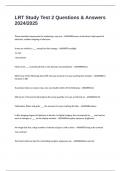Exam (elaborations)
RHCSA Study Questions with 100% Correct Answers
- Course
- Institution
RHCSA Study Questions with 100% Correct Answers List the order of the layers involved in the LVM architecture - Answer️️ - 1. Physical Volume(PV) 2. Volume Group(VG) 3. Logical Volume(LV) What do you need to do before you create a physical volume? - Answer️️ -You need to create a part...
[Show more]












